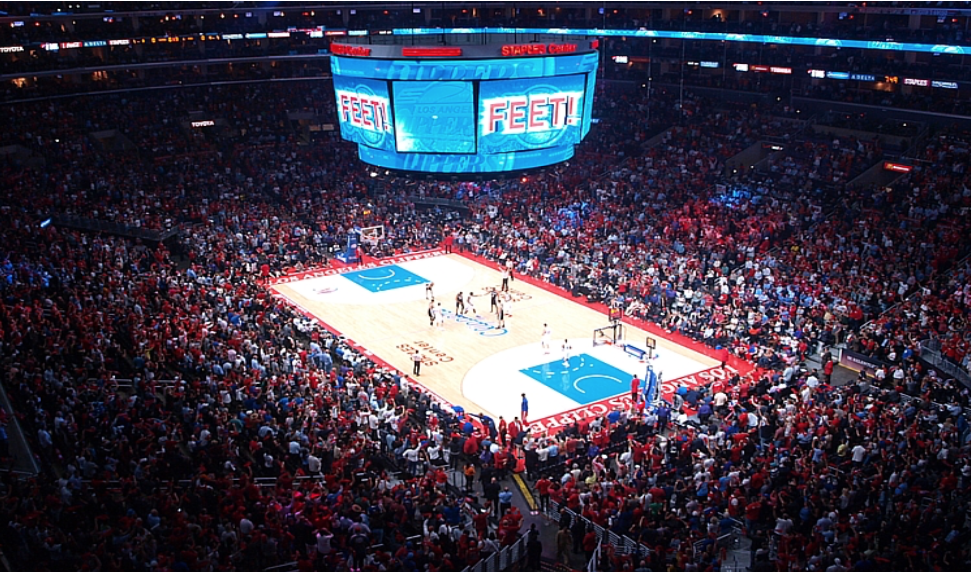CommentsSPORTS POLITICS--This year’s basketball season, with the collapse of the Lakers and the surprising rise of the Clippers, poses a metaphor for the region.
On the one hand, there’s the Laker obsession with the “star system” and impressing outsiders, notably on the East Coast. The Clipper model, reflecting a culture of hard work and teamwork, relies not only on celebrity but the raising of often obscure people into prominence.
Southern California has long exhibited these two narratives. When operating together, as it did at least till the 1990s, the Los Angeles region functioned as both a cultural hub and a place meeting the aspirations for the millions who flocked here. Even as the area was becoming a fashion and entertainment powerhouse, it also became the nation’s largest industrial area, with a powerful aerospace industry. We built mansions for the A-list stories but also lots of affordable single-family housing. A massive investment in prosaic things such as roads, water systems and affordable electricity made it all possible.
Today this approach is seen widely in growing regions like Houston, Dallas-Ft. Worth, Charlotte, Salt Lake and Nashville, which are growing both in the center city and their periphery. In contrast, the recent L.A. narrative has become dominated by the star system, the emphasis on celebrity culture as well as the desire to duplicate superstar city New York. Great emphasis, for example, is put on the transformation of our long-doughty downtown into a gleaming mass of new high-rise residential towers, casting shade on the massive encampments of poor and homeless people.
Largely left out of the discussion has been the other L.A., which the vast majority inhabit, a city of small industries, neighborhoods, backyard barbecues and church communities. These grassroots forces remain under constant assault, as regulations, taxes and costs force more of the working middle class, and their jobs, out of the region.
Learning from the Clippers
In the past decade the Los Angeles Lakers have followed the star-first approach, building teams around narcissistic aging superstars, first Kobe Bryant and this year LeBron James. The problem is that aging stars decline, and get injured. They also encourage a “win now” strategy, placing less emphasis on the development of home-grown talent, and finding underappreciated players. This has now failed to land the Lakers into the playoffs, not to mention contenders against the historically great Warriors team.
The Clippers present a very different, but more inspiring story. Bought by Microsoft’s Steve Ballmer from the miserable Donald Sterling in 2014, the Clippers have been quietly building something every successful team, and region, needs , a sense of esprit de corps. They have taken players cast off or undervalued elsewhere — Lou Williams, Landry Shamet, Danilo Gallinari, Montrezl Harrel, Patrick Beverley — and molded a cohesive, competitive team.
Under coach Doc Rivers, general manager Lawrence Frank and the true L.A. genius (via West Virginia) Jerry West, the Clippers now seems a greater destination for free agents, like Kawhi Leonard, than the LeBron-led Lakers, marked by division and dysfunction, as indicated by Magic Johnson’s recent resignation as team president.
Implications for southern California
Political prisoners of the star system such as Mayor Eric Garcetti are always focused on hyperbole, making the case L.A. needs to be “the greenest big city” in America, and embracing the notion of L.A. as “the next great transit city.” This strategy may have worked for contractors and some developers but has not for many Angelenos, according to a recent UCLA study, with roughly half of all people under 30 and residents of central L.A. expressing negative feelings about the area.
Certainly the transit gambit has been disappointing; despite spending $20 billion building subways and light rail, transit has lost market share and riders since before the first line opened in 1990. Similarly, downtown suffers a high vacancy rate, and an impending glut of high-cost units. Most important, our region has been losing jobs that pay more than $75,000 annually for a decade, while suffering the highest levels of housing over-crowding , the lowest homeownership rates and the second largest concentration of homeless in the nation.
Clippers offer hope
A great city, or region, like a great basketball team, must be built around not one or two players, but the entire lineup. L.A. may have the Olympics, Hollywood and LeBron, but its largely blue-collar residents need industrial, middle-management service and construction jobs more than celebrity photo-ops. Building Hong Kong-like high-rises to appeal to foreign buyers may enrich some investors, but building middle-class housing, whether in single-family or moderate-density townhouses, should be the priority.
Like the Clippers, Los Angeles needs to blend many differing talents that grow from our diverse neighborhoods.
Rather than follow the Lakers’ star system, let’s embrace the Clippers bottom-up approach, a commitment to patient team-building. This not just because they have performed better, but because they demonstrate how even the most troubled teams can be turned around, and creating the basis for a potential champion in the next few years.
(Joel Kotkin is the presidential fellow in urban futures at Chapman University and executive director of the Center for Opportunity Urbanism. Luis B. Torres is research economist at Texas A&M University’s Real Estate Center, which studies the U.S. economy, world economy, and real estate markets. Formerly with Mexico’s central bank, Banco de Mexico, he has published articles in academic and nonacademic publications about banking, international economics, trade, real estate, and applied econometrics. This piece was posted most recently at New Geography, edited by Joel Kotkin.)
-cw
















